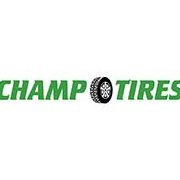AutoShopOwner Articles
This forum is reserved for article discussions. Comments posted on article pages will also be added as posts to article threads here, and visa versa.
543 topics in this forum
-
- 1 reply
- 543 views
-
- 0 replies
- 675 views
-
- 1 reply
- 717 views
-
- 0 replies
- 780 views
-
- 0 replies
- 852 views
-
- 0 replies
- 1.2k views
-
- 0 replies
- 1k views
-
- 0 replies
- 1.4k views
-
- 0 replies
- 1.3k views
-
- 0 replies
- 1.3k views
-
- 0 replies
- 1.1k views
-
- 0 replies
- 1.2k views
-
- 0 replies
- 763 views
-
- 0 replies
- 828 views
-
- 0 replies
- 512 views
-
- 3 replies
- 811 views
-
- 0 replies
- 669 views
-
- 0 replies
- 615 views
-
- 0 replies
- 341 views
-
- 1 reply
- 420 views
-
- 1 reply
- 577 views
-
- 0 replies
- 326 views
-
- 0 replies
- 346 views
-
- 0 replies
- 529 views
-
- 0 replies
- 278 views
-
- 0 replies
- 425 views
-
- 1 reply
- 485 views
-
- 0 replies
- 521 views
-
- 0 replies
- 577 views
-
- 0 replies
- 578 views
-
- 0 replies
- 653 views
-
- 0 replies
- 353 views
-
- 0 replies
- 496 views
-
- 0 replies
- 510 views
-
- 0 replies
- 686 views
-
- 2 replies
- 1.3k views
-
- 2 replies
- 1k views
-
- 0 replies
- 840 views
-
- 0 replies
- 864 views
-
- 0 replies
- 842 views
-
- 0 replies
- 886 views
-
- 0 replies
- 762 views
-
- 0 replies
- 1.1k views
-
- 0 replies
- 944 views
-
- 0 replies
- 1.1k views
-
- 0 replies
- 1.1k views
-
- 0 replies
- 1.1k views
-
- 0 replies
- 1k views
-
- 0 replies
- 1.1k views
-
- 0 replies
- 1.8k views




.thumb.jpg.2b345efc275b9df0af2bbb306a10a78a.jpg)









